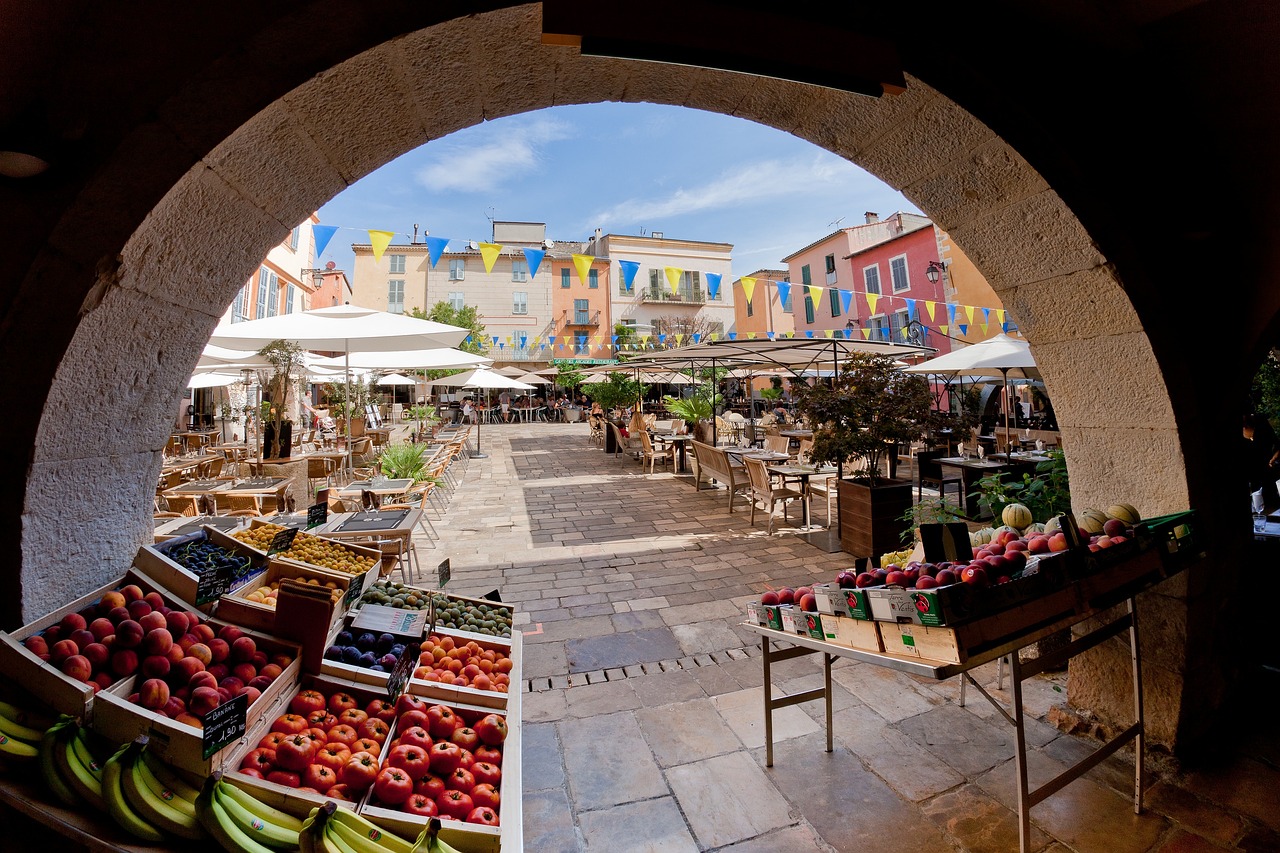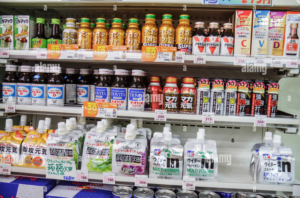
2023 Food and Beverage Trends in France
Share This Post France’s culinary world is distinguished by its ongoing engagement with specific trends and commitment to culinary innovation. The French food and beverage

Japan has a reputation for having one of the world’s most exciting and unique food and beverage cultures. Japanese cuisine is well-known for its combination of fresh and healthy ingredients, delicate flavours, and beautiful presentation. Over the years, Japanese food and beverage trends have continued to evolve, reflecting the changing tastes and preferences of the country’s consumers. In this article, we will explore some of the most significant food and beverage trends currently shaping the Japanese market.
Natural Food Over Processed

Japanese consumers are increasingly interested in natural, unprocessed foods. They are more conscious of their health and well-being and seek food to support a healthy lifestyle. This trend has been studied by a growing interest towards clean labelling, where consumers are interested in seeing nutrition claims that are easy to understand and transparent. Consumers want to know what they are eating, and they are becoming more sceptical of products that contain artificial ingredients or additives.
Organic food is also becoming more popular in Japan. There is a growing awareness of the importance of eating food that is free from pesticides and other harmful chemicals. Consumers are willing to pay more for organic products and are increasingly seeking out retailers and restaurants offering organic options.
Even in snacking, In-vitamin jelly is a popular option that consists of 12 daily vitamins and are fat free.
Another aspect of this trend is the shift towards consuming less alcohol. In recent years, there has been a decline in alcohol consumption in Japan, particularly among younger generations. Consumers are looking for non-alcoholic alternatives, such as low-alcohol beer or sparkling water with fruit flavours.
Premium Cuisine

Japan is known for its premium products, and this trend extends to its food and beverage culture. Japanese consumers are willing to pay a premium for high-quality products, including coffee, wine, tea, and high-end food. The demand for premium products is driven by a desire for quality and the perception that these products are healthier and better for the environment.
Premium coffee has become increasingly popular as well. There is a growing interest in specialty coffee shops that serve high-quality coffee made from carefully selected beans, rivalling those in Europe and the United States. In fact, even the Starbucks in Nakameguro, Tokyo is the largest Starbucks in the world, and was partly designed by an architect called Kengo Kuma, who emphasised Japanese design elements such as ceilings resembling origami.
Japanese consumers are also showing a greater interest in high-class wines and artisanal tea. Tea ceremonies, loose leaf teas and green teas are popular in Japanese culture; green tea often being the staple when speaking about ‘Japanese tea’. One of the tea schools in Japan, shizu-kokoro, demonstrates old tea traditions for newbie’s to learn and try. Gyokuro is perceived as the highest quality tea in Japan. It is often the most expensive but is known to improve mental clarity and promote healthy skin.
Innovation (in experience as well as food)

In Japan, dining out is not just about the food; it is also about the experience. Customers are seeking innovative and exciting dining experiences that provide a unique atmosphere. Restaurants and cafes are creating innovative and immersive experiences for their customers. For example, many restaurants use dim lighting to create a more intimate and cozy atmosphere. Many are incorporating live music and art installations to create a multi-sensory experience.
Furthermore, there is a growing trend towards international cuisine in Japan. With an increasing number of foreigners living and working in the country, Japanese consumers are being exposed to new and exciting cuisines from around the world. This has led to the growth of fusion restaurants that combine elements of traditional Japanese cuisine with international flavours. Such as, Mediterranean or South American cuisine.
Innovation is a key aspect of this trend. Japanese consumers are looking for unique and creative food and beverage products that offer an experience that they can’t find anywhere else. For example, some restaurants are offering virtual reality dining experiences where customers can “travel” to different parts of the world while enjoying a meal.
There has been a growing interest in unusual and quirky snacks and drinks that offer a fun and memorable experience.
Versatile Goods

Japanese consumers are looking for versatile goods that offer a range of health benefits. These are usually quick, on-the-go products that are also functional drinks. These include fruit, sports, energy and fermented drinks. These products offer a range of benefits, including improved metabolism, maintained energy levels, reduced inflammation, and improved gut health.
One popular functional drink in Japan is Yakult. This contains beneficial bacteria that aid in digestion and improve the immune system. Fermented drinks aid the growing demand for drinks that relieve stress and improve sleep. These drinks are particularly popular among consumers with hectic lifestyles who are looking for ways to relax and unwind.
The need for versatility has branched from the fact that more consumers have been opting for convenience and speed. Thus, the demand for delivery services has skyrocketed in recent years. There is a growing popularity of online food delivery services. Marketers in the industry need to adapt to this trend by leveraging technology to offer a seamless and user-friendly online ordering experience.
Seasons and Limited Edition

In Japan, the changing of the seasons is a significant cultural event. Japan is known for its beautiful Cherry blossom season, or Sakura, is one of the most highly anticipated events of the year. Often, companies release seasonal products that are tied to the changing seasons. For example, to celebrate the Sakura occasion, many food and beverage companies release limited edition Sakura-themed products. These products often feature pink packaging with cherry blossom designs, and the flavours are often infused with Sakura petals or cherry blossom extracts. Some examples of Sakura-themed products include Sakura-flavoured Kit Kats, Sakura Pepsi, and Sakura mochi (a sweet sticky rice cake wrapped in a cherry blossom leaf).
Not only do these Sakura-themed products create a sense of excitement around the changing of the seasons, but they are also highly collectable. Many people try to collect as many different Sakura-themed products as possible each year, leading to a sense of competition among consumers.
Frozen Food: Nesting demand

Frozen food is a trend that is gaining popularity in Japan. Many Japanese consumers are busy with work and don’t have time to cook elaborate meals every day. In addition, the rise of double income households means that people have less time to spend on cooking and cleaning. As a result, the nesting’s demand for frozen food has increased.
However, the frozen food trend in Japan is different from what you might expect. Unlike frozen food in other parts of the world, Japanese frozen food is often not heavily processed and contains no preservatives. Instead, the food is fully made and then frozen to preserve its freshness. This ensures that the quality of the food remains high, even when it’s been frozen for an extended period of time.
One example of a popular frozen food in Japan is nabe (hot pot). Nabe is a traditional Japanese dish that is typically made with fresh vegetables and meats in a pot on the stove. However, with the rise of frozen nabe, people can now enjoy this dish with minimal preparation time. All they need to do is heat the frozen nabe in a pot on the stove, and it’s ready to eat.
Insects
Insects are becoming an increasingly popular source of protein in many parts of the world. In Japan, insects have been a part of the cuisine for centuries. However, in recent years, the use of insects in food and beverages has increased significantly. Dried and packaged bugs like crickets and scorpions are now widely available in supermarkets and online stores.
There are several reasons for the growing popularity of insects in Japan. Unexpectedly it is partly due to the labour shortage in Japan. This has resulted in idle workspaces that are not being used. Companies have branched into these spaces and utilised them as insects can be raised there, providing a source of income for farmers and creating new jobs in the insect farming industry. Rent for these spaces as well as providing supply for restaurants boosts economic activity.
But why would you eat insects I hear you ask? Insects are a sustainable source of protein. They require less water and food than traditional livestock and produce fewer greenhouse gases. As a result, many people see insects as a way to reduce their carbon footprint and contribute to a more sustainable food system. The intrigue and fun in trying something new also provides incentive for Japanese consumers and companies can stand out from competitors in a very saturated market.
Several key trends have emerged in recent years that are booming in 2023 and are worth paying attention to. These include versatile goods, premium goods, seasonal products, frozen food, customer experience and somehow: insects. Businesses in Japan’s food and beverage industry should pay close attention to these emerging trends and adapt their strategies accordingly.
Whether by focusing on offering premium ingredients, unique and exotic flavours, and luxurious packaging, or taking the frozen foods and convenience route, remember Japanese consumers appreciate quality. If you are looking to see how your business can expand into new markets, such as food and beverage or in new countries, such as Japan, contact operviser and we’ll work with you, informing you of the best ways to do so effectively and successfully.

Share This Post France’s culinary world is distinguished by its ongoing engagement with specific trends and commitment to culinary innovation. The French food and beverage

Share This Post Before choosing to sell your product or service in the Japanese market, it’s essential to understand the nuances behind Japanese consumer psychology.
